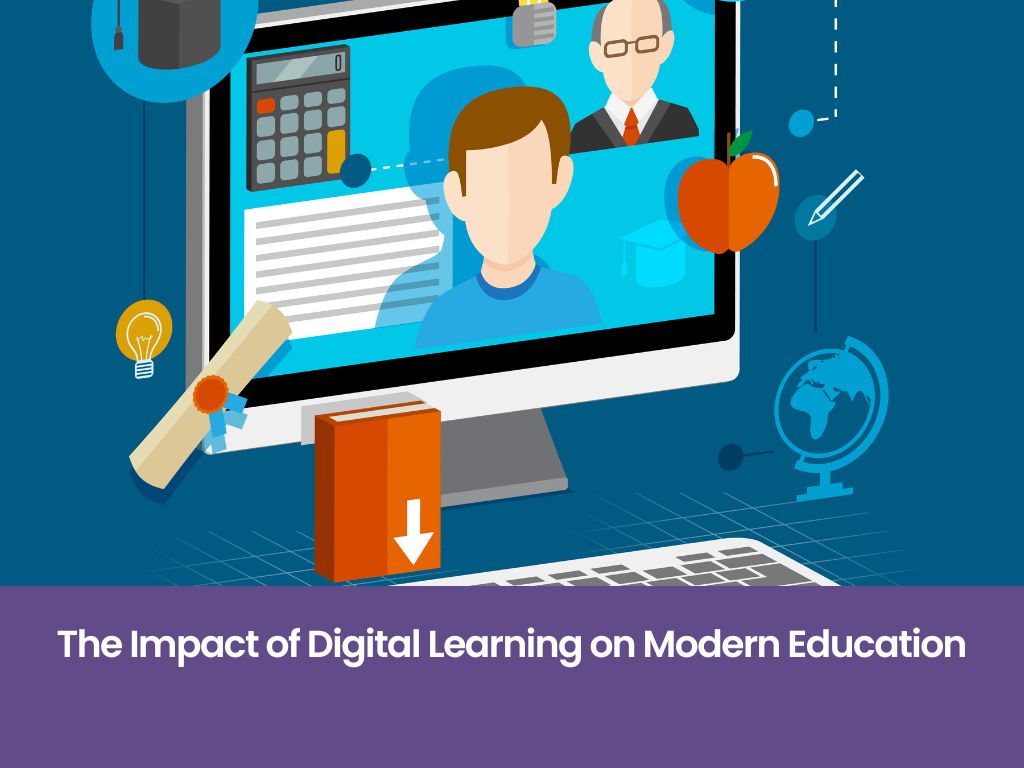The Impact of Digital Learning on Modern Education
posted on Feb 14, 2025
Education has evolved significantly with the rise of digital technology. Traditional classroom methods are being complemented—and in some cases, replaced—by innovative digital learning techniques that make education more engaging, interactive, and accessible

Introduction
Education has evolved significantly with the rise of digital technology. Traditional classroom methods are being complemented—and in some cases, replaced—by innovative digital learning techniques that make education more engaging, interactive, and accessible. BGS Vijnatham School, one of the best schools in Greater Noida West, has embraced digital learning to enhance student engagement and academic performance. As a top school in Greater Noida West, it integrates smart classrooms, online resources, and technology-driven teaching methods to ensure students receive a future-ready education.
What is Digital Learning?
Digital learning refers to the use of technology to deliver and enhance education. This includes:
- Smart classrooms with digital boards and multimedia content
- Online platforms offering interactive lessons and assignments
- Virtual reality (VR) and augmented reality (AR) experiences for immersive learning
- Educational apps and gamified learning tools
- Video lectures and live-streamed classes
- AI-driven personalized learning paths
With these advancements, students are no longer limited to textbooks and blackboards. They can explore complex subjects through interactive visuals, simulations, and real-world applications.
How Digital Learning is Transforming Education
- Enhancing Student Engagement and Understanding
Digital learning makes lessons more dynamic and visually appealing. Instead of reading about a historical event, students can watch 3D reconstructions and virtual tours. Instead of solving math problems on paper, they can use apps that provide instant feedback and explanations.
- Personalizing Learning Experiences
Every student has a unique learning pace. Digital tools allow teachers to customize lesson plans and assignments based on individual strengths and weaknesses. AI-driven platforms assess student progress and recommend tailored exercises, ensuring better comprehension.
- Increasing Accessibility and Flexibility
With online resources, students can access lessons anytime, anywhere. Whether revisiting recorded lectures or practicing through e-learning platforms, they can learn at their own convenience. This is particularly beneficial for students who need additional revision or have different learning styles.
- Encouraging Collaborative Learning
Digital tools enable students to collaborate beyond the classroom. Online forums, virtual study groups, and real-time document sharing allow seamless teamwork and idea exchange. This prepares students for modern work environments where digital collaboration is key.
- Improving Teacher Efficiency and Feedback Systems
Technology automates tasks like grading, attendance tracking, and assignment submissions, allowing teachers to focus more on personalized guidance. AI-driven assessments provide instant feedback, helping students identify and improve their weak areas.
- Fostering Creativity and Critical Thinking
From coding platforms to digital art tools, technology encourages students to think creatively. Problem-solving games, logic-based challenges, and AI-driven simulations help develop analytical thinking and decision-making skills.
- Preparing Students for Future Careers
With automation and AI reshaping industries, digital literacy is now essential. Exposure to coding, robotics, and data analysis from an early age prepares students for technology-driven careers. Schools that integrate digital learning ensure that students develop the skills needed to thrive in the digital economy.
How BGS Vijnatham School Incorporates Digital Learning
BGS Vijnatham School has made technology an integral part of its curriculum to ensure that students receive a well-rounded, future-oriented education.
Smart Classrooms and Multimedia Teaching
Lessons are taught using digital boards, videos, and interactive simulations, making complex subjects easier to understand and remember.
E-Learning Platforms and Online Assessments
The school provides access to online study materials, digital homework assignments, and AI-based assessments, allowing students to learn beyond textbooks.
Coding and Robotics Programs
To develop problem-solving skills, students participate in coding workshops, AI learning, and robotics projects, preparing them for careers in science, technology, engineering, and mathematics (STEM).
Virtual Labs and Augmented Reality Learning
Subjects like science, history, and geography come alive through virtual lab experiments, AR experiences, and 3D visualizations, helping students grasp complex concepts easily.
Cyber Safety and Digital Ethics Training
Since digital education also involves online exposure, students are trained in internet safety, responsible digital behavior, and cybersecurity practices to ensure safe and ethical online learning.
The Long-Term Benefits of Digital Learning
Students who are exposed to digital learning from an early stage experience several long-term benefits, including:
- Stronger analytical and problem-solving skills due to interactive and AI-based learning
- Better adaptability and self-learning abilities, making them independent thinkers
- Greater exposure to global knowledge and real-world applications beyond textbooks
- Improved digital literacy and tech-savviness, preparing them for future careers
- Increased motivation and confidence in learning through gamified and interactive platforms
Conclusion
Digital learning has redefined modern education, making it more engaging, personalized, and accessible. It helps students develop creativity, critical thinking, and adaptability—skills that are essential for the future. Schools that integrate technology into their curriculum provide students with a competitive edge in academics and future careers.